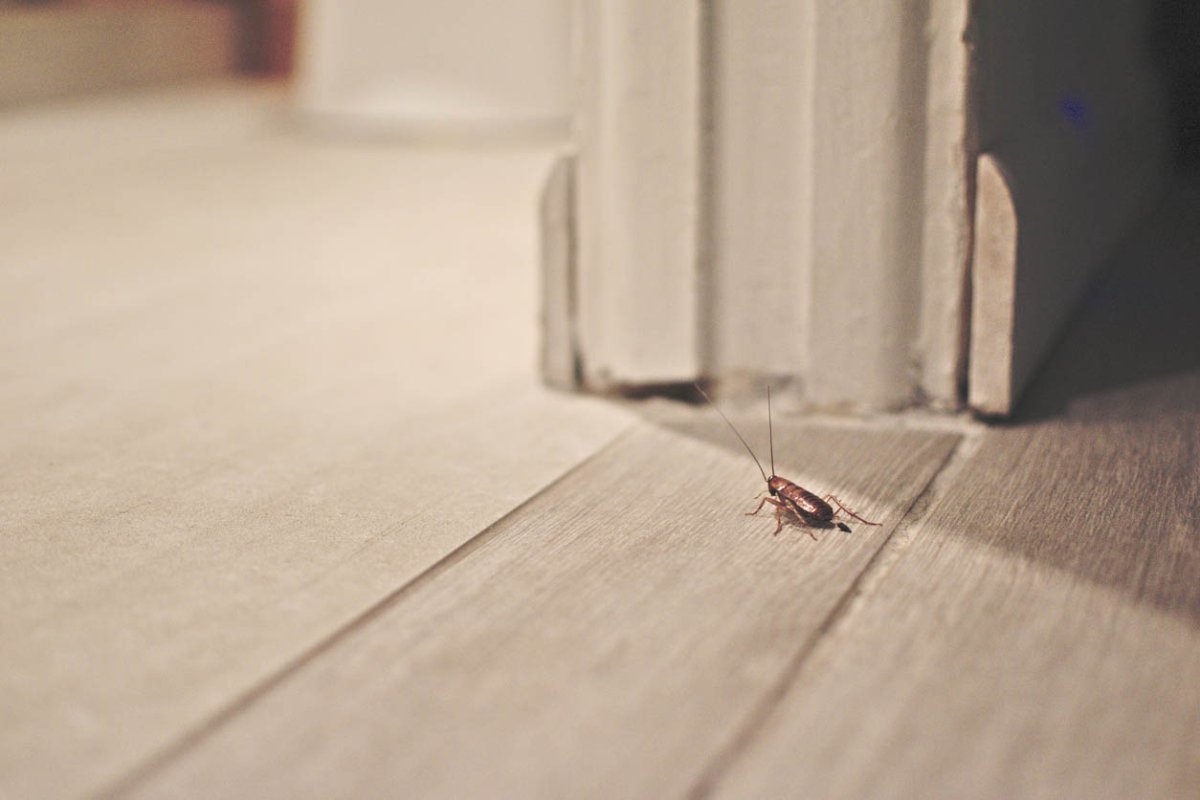

We may earn revenue from the products available on this page and participate in affiliate programs. Learn More ›
It’s not uncommon to spot tiny brown bugs in the house, especially around food, windows, or moisture-prone areas. These pests might seem harmless at first glance, but their presence can quickly become a nuisance (or even a health concern, depending on the species).
Before reaching for a spray or setting traps, it’s important to identify exactly what kind of bug you’re dealing with. Knowing their color, size, body shape, and where they appear in the home can provide helpful clues. According to Daniel Harris, an associate certified entomologist and region technical training manager at Arrow Exterminators, collecting a sample or photo of the bug can go a long way toward narrowing down the type and deciding how to get rid of it effectively.
1. Drugstore Beetles
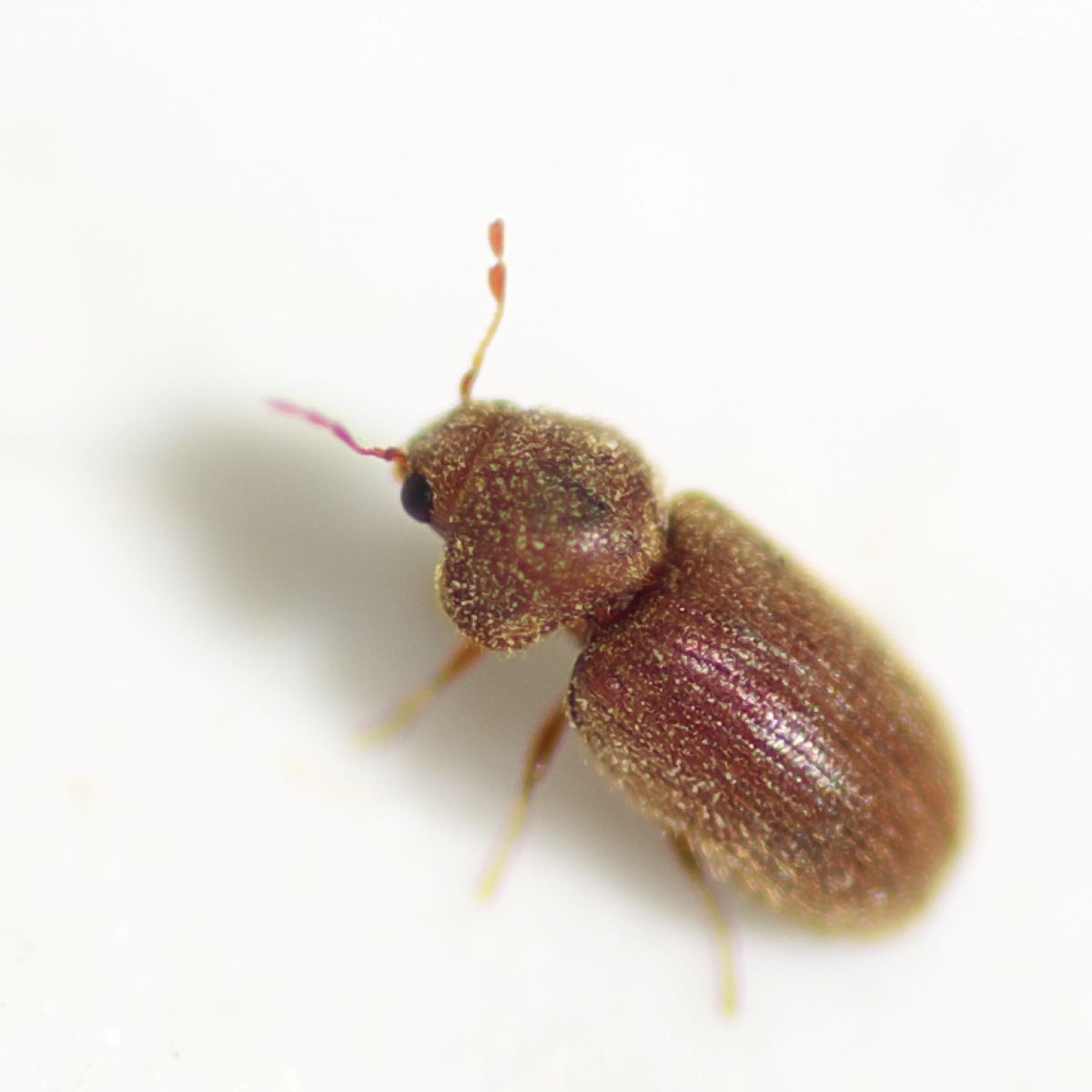
Drugstore beetles, a type of beetle that’s also known as bread or biscuit beetles, are often mistaken for small cockroaches due to their coloring and segmented antennae. But they’re much smaller, measuring only 2¼ to 3½ millimeters long. These tiny reddish-brown bugs most often appear near pantry staples like flour, grains, spices, and dried goods.
To confirm you’re dealing with a drugstore beetle, look for tiny holes in packaging and reddish-brown beetles crawling in or around dry food containers. According to Harris, “Providing a good picture or video of the pest in action is beneficial,” since people easily confuse drugstore beetles with other pantry pests.
How to get rid of drugstore beetles:
- Discard any infested food items immediately.
- Empty and clean pantry shelves with soap and water—or a vinegar solution.
- Switch to airtight containers for storing food.
- Vacuum shelves and corners thoroughly to remove crumbs and eggs.
- Consider a pyrethroid-based insecticide for lingering pests, following all label directions carefully.
2. Spider Beetles
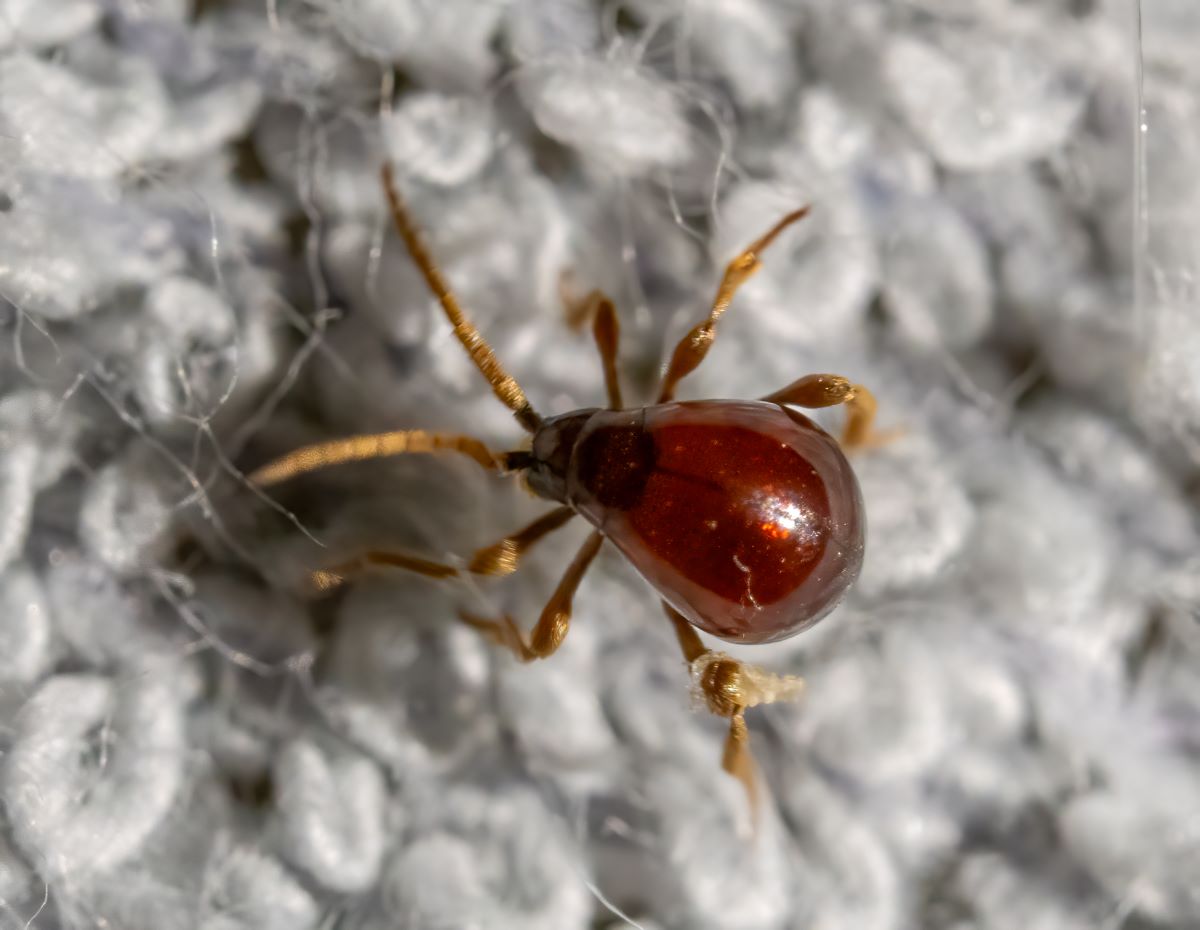
Spider beetles are unusual-looking pantry pests that are often mistaken for bed bugs, especially after the latter have recently fed. These tiny brown household bugs have shiny, rounded bodies that can range in color from reddish-brown to nearly black. Their legs and long antennae tend to be a lighter amber or yellow, and they typically grow no more than 3½ millimeters long.
The spider beetle can resemble a brown beetle in the house or even a blood-fed bed bug, but although their appearances are similar, their habits are very different. Bed bugs prefer to hide in furniture, mattresses, or carpets and feed on humans or pets. Spider beetles, on the other hand, are scavengers—often found in kitchen cabinets or pantries feeding on grains, flour, pet food, and other dry goods.
How to get rid of spider beetles:
- Inspect food storage areas closely for signs of infestation.
- Dispose of any infested or expired food products.
- Clean shelves with soap and water or a vinegar solution.
- Store dry goods in sealed, pest-proof containers.
- Vacuum cracks and corners to remove eggs or crumbs.
3. Silverfish
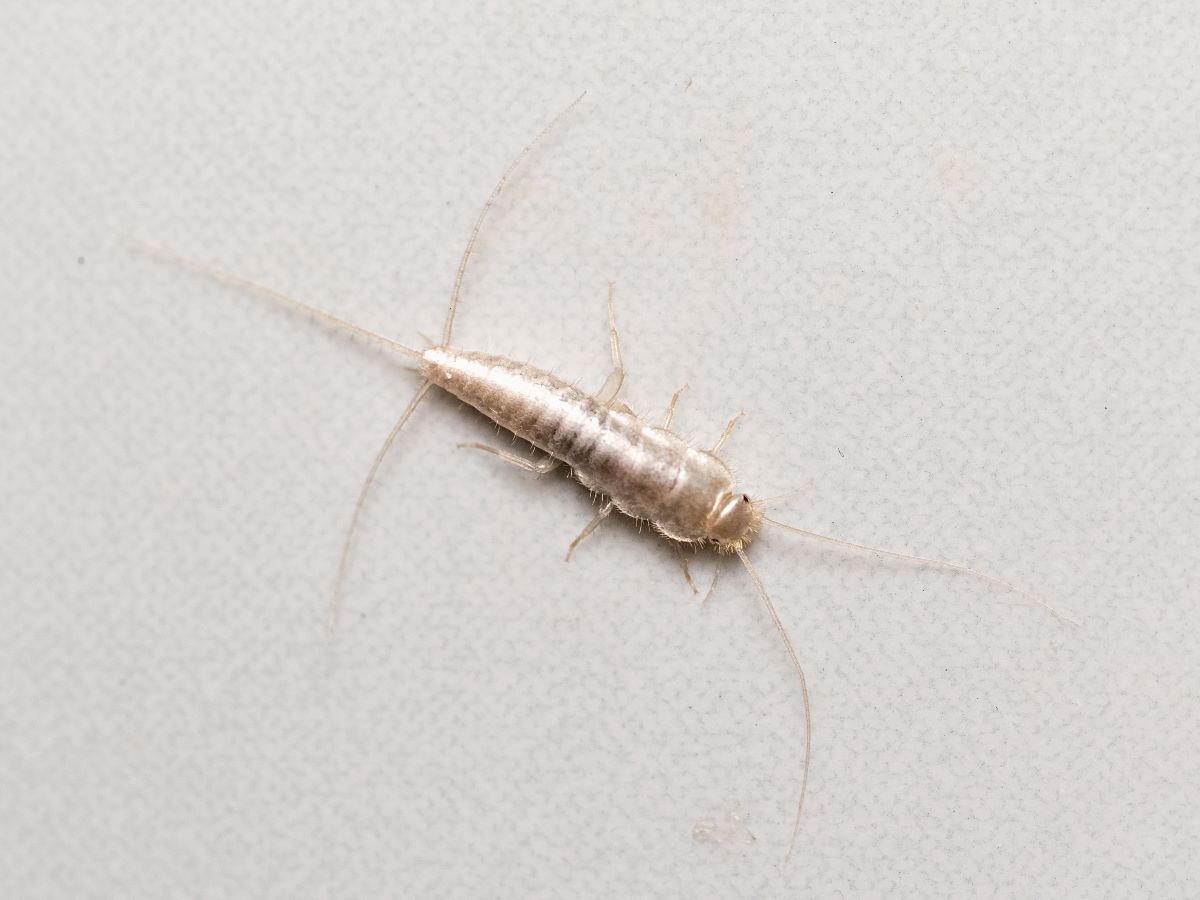
Silverfish are easy to identify thanks to their metallic brown or silver scales, teardrop-shaped bodies, and three distinct bristle-like tails. These insects are relatively large compared to others on this list, measuring between 12 and 19 millimeters long, and are common household invaders, especially during the cooler months.
While they don’t bite or fly, silverfish move quickly and often hide in dark, damp areas like basements, laundry rooms, and bathrooms. These tiny brown bugs in bathroom spaces feed on starchy materials such as paper, glue, cardboard, and even wallpaper, which makes them a nuisance for homeowners with books or stored boxes.
How to get rid of silverfish:
- Reduce humidity with a dehumidifier or better ventilation.
- Remove paper clutter and cardboard storage in affected areas.
- Use traps or diatomaceous earth in corners and baseboards.
- Seal up cracks and crevices where the bugs may be hiding.
- Vacuum regularly to eliminate food sources and eggs.
4. Firebrats

People often confuse firebrats with silverfish, since both have a similar size and grayish, scaly appearance. Both insects have long antennae, three tail-like bristles, and a taste for starch-based materials like paper, glue, and pantry staples.
The key difference? Firebrats have a duller, mottled gray body and prefer hot, humid environments, typically around 100 degrees Fahrenheit. While silverfish might lurk in damp basements or bathrooms, firebrats are more likely to hang out near appliances or in attics, boiler rooms, and occasionally in kitchen cabinets if the conditions are warm enough.
How to get rid of firebrats:
- Reduce indoor humidity and increase ventilation where possible.
- Eliminate access to paper, cardboard, and food debris.
- Place sticky traps or apply boric acid in common hiding spots.
- Seal cracks and gaps around plumbing, baseboards, and vents.
- Vacuum regularly to remove eggs and potential food sources.
5. Weevils
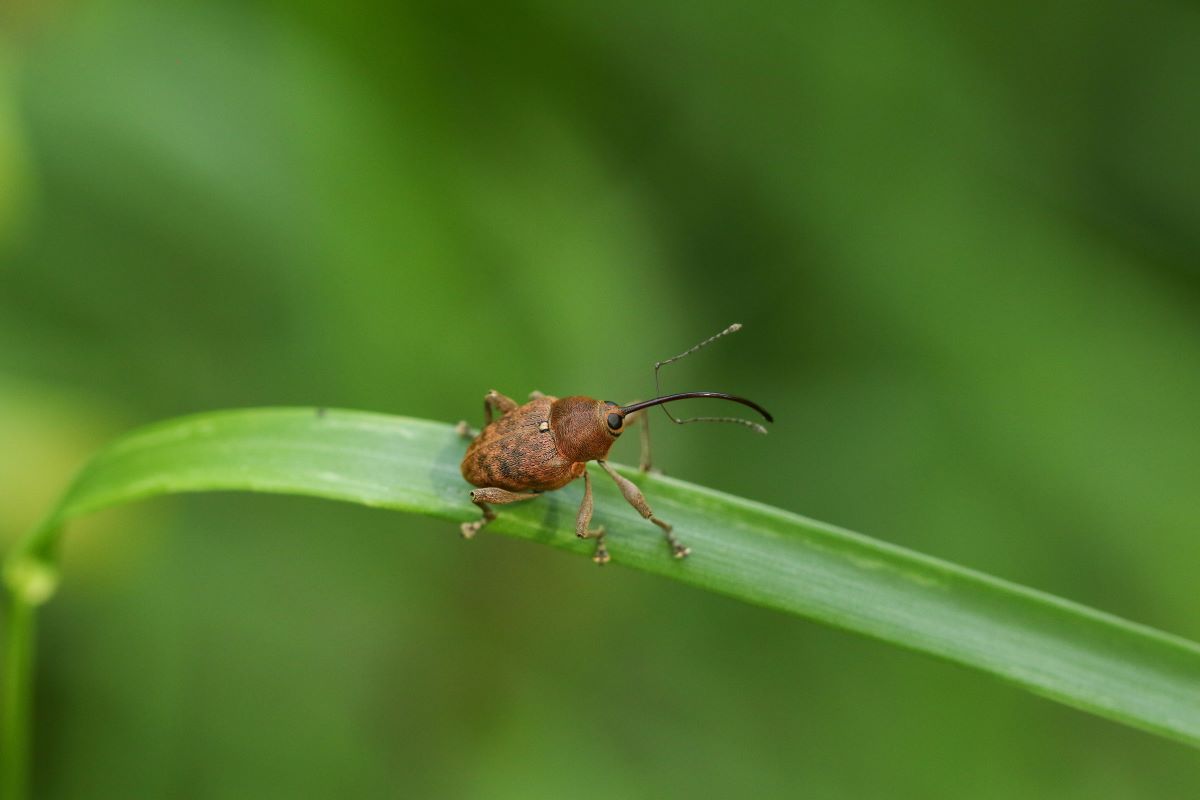
Weevils are a common pantry pest often found in dry goods like rice, flour, and grains. These small brownish beetles typically measure between ⅛ and ¼ inch long and their snout gives them away. “This small, dark brown to black beetle has a very noticeable ‘snout,’” says Harris.
Female weevils burrow into whole grains or seeds to lay their eggs, which then hatch and feed from the inside out. As Harris explains, “Weevils are stored-product pests and can infest any whole-kernel product, such as rice, corn, or sometimes even legumes like beans and lentils.”
How to get rid of weevils:
- Discard any infested products immediately.
- Freeze grains and dry goods for 3 to 4 days before storing.
- Use airtight containers for long-term storage.
- Clean pantry shelves regularly to remove crumbs and eggs.
- Inspect new bulk goods closely before bringing them indoors.
6. Pantry Moths
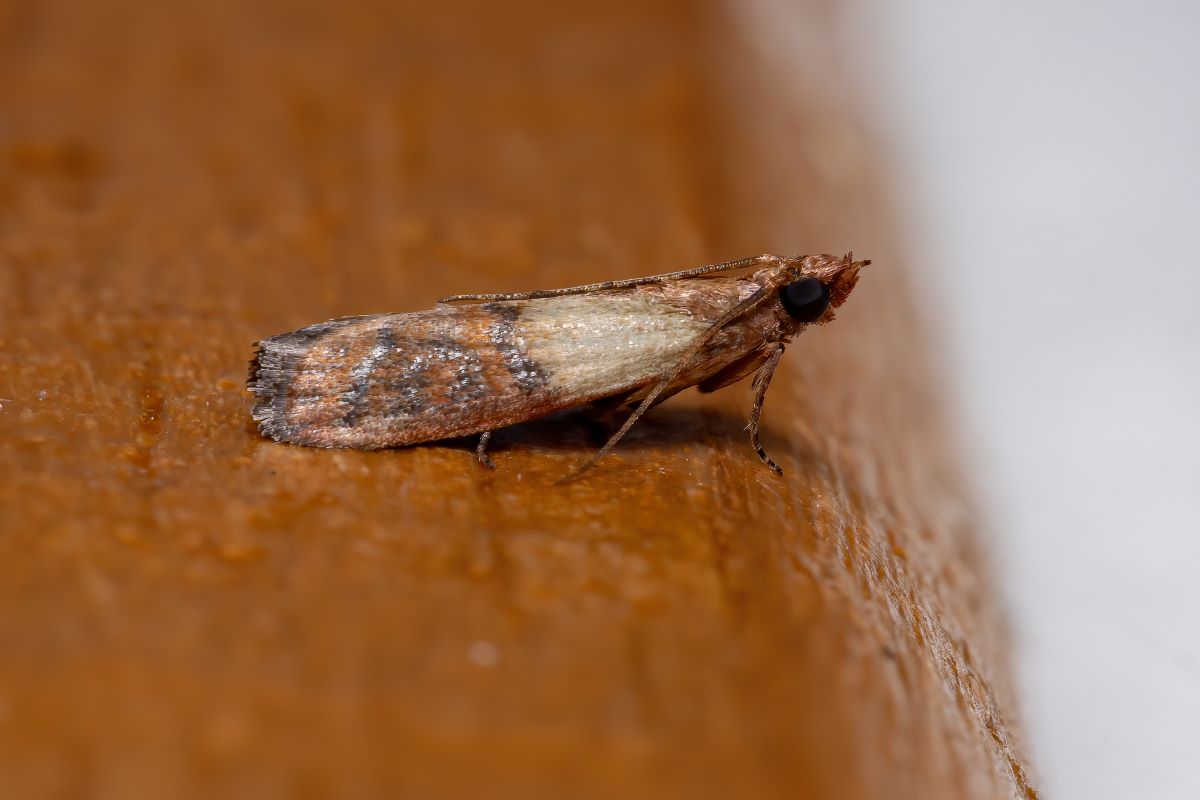
Pantry moths are common kitchen pests that often show up unexpectedly after you bring home contaminated dry goods. These pests start off as tiny pinkish larvae with dark brown heads and grow into moths with gray and brown wings. Because they can fly, they’re sometimes mistaken for tiny brown bugs in the house that fly, especially when seen fluttering near food storage.
Infestations usually begin when larvae arrive with packaged goods like flour, rice, or cereal. Once inside a pantry, they can chew through packaging, contaminate nearby items, and lay hundreds of eggs, allowing the problem to spread quickly.
How to get rid of pantry moths:
- Toss out all infested food and packaging.
- Wipe down shelves thoroughly with soap and water or vinegar.
- Store food in airtight glass or plastic containers.
- Use pantry-safe moth traps to catch active adults.
- Note: Avoid using mothballs in the pantry—these are toxic and not food-safe, according to the National Pesticide Information Center.
7. Cockroaches
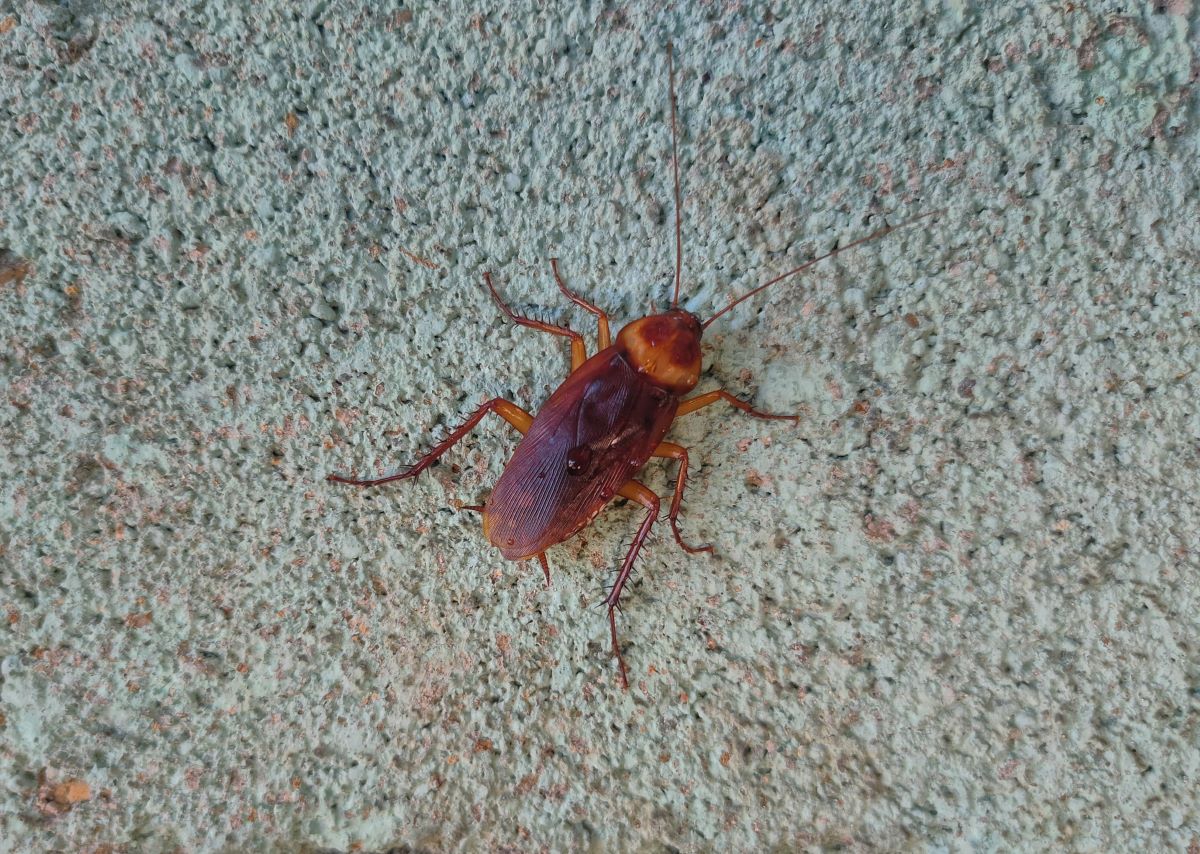
Cockroaches are among the most persistent indoor pests, and often go unnoticed until the problem gets much worse. These small brown bugs typically measure between ¼ and ½ inch long and have flat, oval-shaped bodies, six legs, and two long antennae.
Though seeing one might not seem like a big deal, cockroaches reproduce rapidly and often hide during the day. They come out at night to scavenge for food or find a mate, and a single female can lay up to 40 eggs at once—so acting early to get rid of cockroaches is really important.
How to get rid of cockroaches:
- Set sticky traps or roach bait stations in areas where cockroaches have been spotted.
- Keep food sealed and clean up crumbs or spills quickly.
- Take out the trash regularly and avoid leaving dirty dishes overnight.
- Seal cracks, gaps, and entry points around walls and plumbing.
- Use an indoor-safe insecticide as needed, following label directions.
8. Ticks

Ticks are parasitic pests that can be dangerous to both humans and pets. These tiny reddish-brown bugs are sometimes mistaken for bed bugs due to their small size and similar coloring. However, unlike bed bugs, ticks can carry harmful pathogens, including those that cause Lyme disease.
Watch for different types of ticks to watch for indoors. Deer ticks are the most common and are identifiable by their reddish bodies and black dorsal shields. Brown dog ticks, on the other hand, are more likely to infest homes. “One of the few tick species that can spend its entire life cycle within a home,” notes Harris, “a brown dog tick lays as many as 7,000 eggs in its lifetime.”
How to get rid of ticks in the home:
- Regularly check pets for ticks, especially after outdoor activity.
- Wash pet bedding and vacuum thoroughly in areas where pets spend time.
- Seal cracks and crevices that might allow ticks inside.
- Use veterinarian-recommended tick prevention for pets.
- Call a pest control professional for large or persistent infestations.
9. Fruit Flies
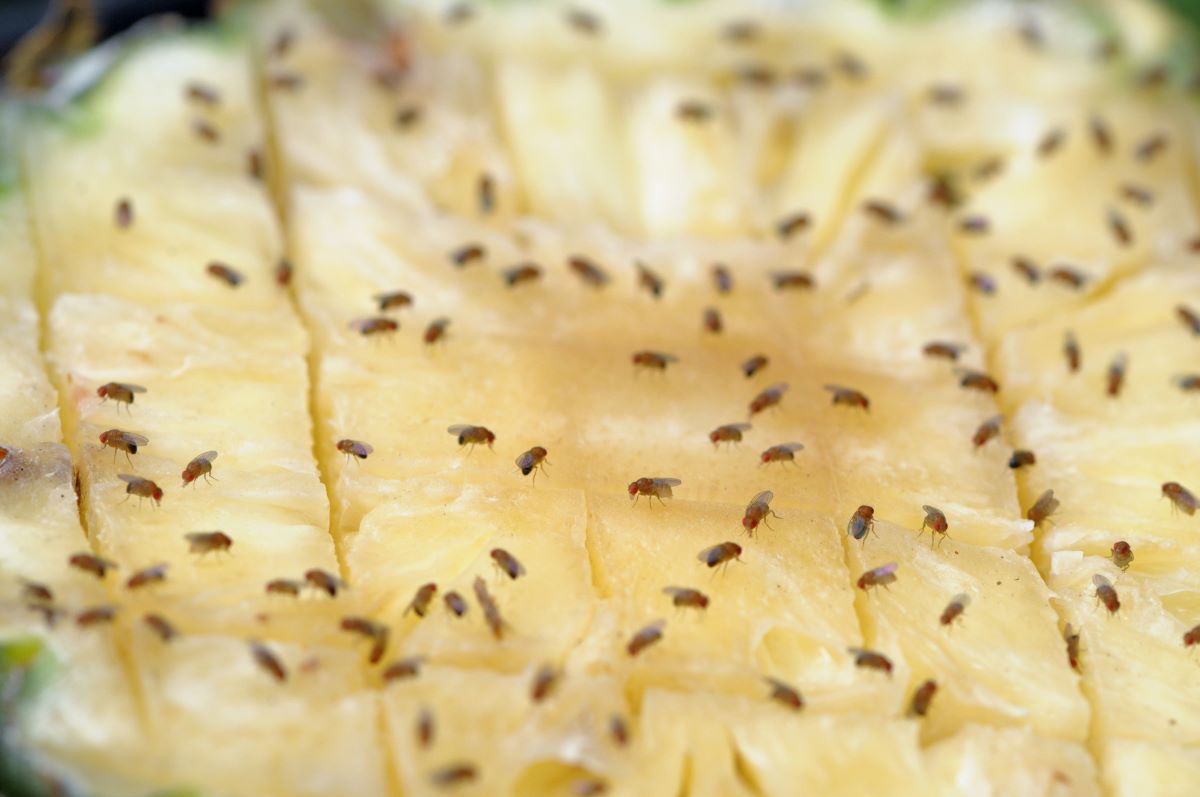
Fruit flies are one of the most common flying insect types found in kitchens, especially where people leave out ripe fruit, sugary spills, or food waste. These tiny brown bugs in the kitchen tend to gather around fruit bowls, trash bins, and kitchen drains, particularly in warm, humid conditions.
Measuring only about 2½ millimeters long, fruit flies are light brown or gray with translucent wings that cover most of their body. They reproduce rapidly, which makes them tough to eliminate once established—but cutting off their food sources is usually effective in getting rid of fruit flies.
How to get rid of fruit flies:
- Store fruit in the refrigerator instead of on the counter.
- Wipe down countertops and clean up spills immediately.
- Rinse out recycling and take out the trash frequently.
- Clean kitchen drains with boiling water, baking soda, or vinegar.
- Set vinegar traps to catch adult flies.
10. Ants
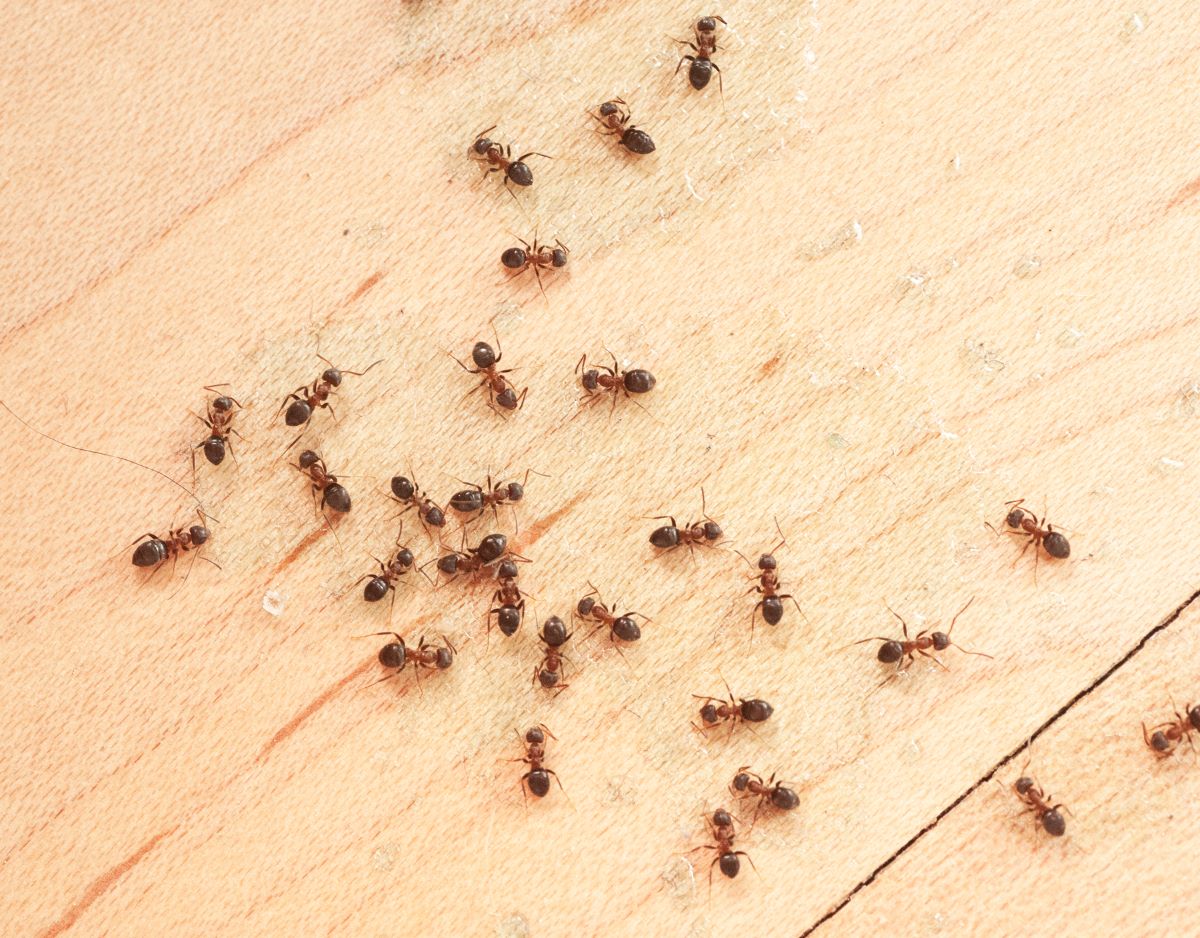
Ants are one of the most common and persistent household pests. Attracted to crumbs, spills, and open food containers, ants often forage in kitchens but can show up anywhere they find a reliable food source. Most household ants are 3 to 4 millimeters long and range in color from light brown to black.
While many ants are simply a nuisance, some types can cause bigger problems. Carpenter ants, for instance, resemble termites and can tunnel into wood, leading to structural damage over time. Fire ants, on the other hand, are reddish-brown and known for their painful stings when provoked.
How to get rid of ants:
- Wipe down surfaces regularly and store food in sealed containers.
- Seal entry points around doors, windows, and baseboards.
- Set ant baits or homemade ant traps near trails or entry points.
- Avoid using spray insecticides near bait stations, as it might reduce their effectiveness.
- For persistent or widespread infestations, consult a pest control professional.
11. Mites

There are a few different kinds of mites you might find in the home, the most common of which are red or clover mites (pictured above) and dust mites. Of the two, the reddish-brown clover mites, which are about 3/4 cm long, are the only ones you can see with the naked eye. They’re commonly seen indoors in warm weather and can leave red stains on furniture and fabric if they are squashed.
Dust mites are microscopic pests that feed on dead skin cells and thrive in dusty environments—especially in bedrooms where pillows, mattresses, and upholstered furniture provide ideal hiding spots. Because of their size, most people don’t realize they’re around unless allergy symptoms develop.
According to the Mayo Clinic, dust mites can trigger sneezing, itching, and congestion, and even worsen asthma. People sometimes mistake these reactions for bed bug bites, but there’s a key difference: Bed bugs are visible and can be felt crawling on the skin, while mites are not.
How to reduce dust mites:
- Wash bedding weekly in hot water.
- Use allergen-proof covers on pillows and mattresses.
- Dust and vacuum regularly using a HEPA filter.
- Clean upholstered furniture and curtains frequently.
- Use a dehumidifier to keep indoor humidity below 50 percent.
12. Bed Bugs

Bed bugs are small, flat, oval-shaped insects that feed on the blood of humans and animals while they sleep. They’re reddish-brown in color and typically about the size of an apple seed. Unlike mites, bed bugs are visible to the naked eye and like to hide in mattress seams, headboards, bed frames, and even behind baseboards or wallpaper.
The first sign of a bed bug problem is often itchy, red bite marks on the skin, often appearing in a line or cluster. You might also spot tiny blood stains on sheets or dark specks of waste near sleeping areas.
How to get rid of bed bugs:
- Wash all bedding, clothing, and linens in hot water and dry on high heat.
- Vacuum mattresses, furniture, and flooring thoroughly.
- Encase mattresses and box springs in bed bug-proof covers.
- Use a steamer on soft surfaces and crevices.
- For large infestations, turn to professional treatment.
13. Spiders
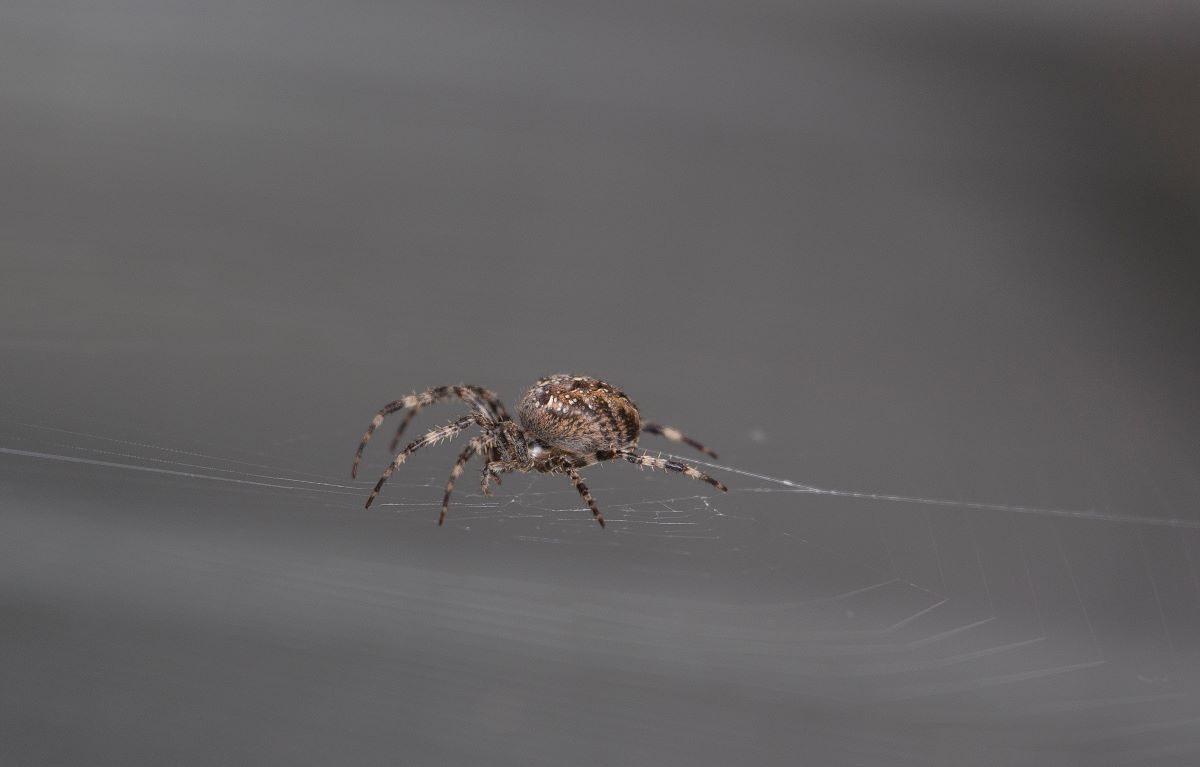
Spiders are often unwelcome guests in the home, though most are harmless and even help control other pests. Common household spiders range in size and color but typically have long legs and rounded bodies. They prefer quiet, undisturbed areas like basements, closets, garages, or ceiling corners.
Some species, such as the house spider or cellar spider, are benign, while others, like the brown recluse and black widow, can pose health risks if disturbed. Most spiders enter homes looking for food or shelter, not to cause harm.
How to get rid of spiders:
- Clear clutter and vacuum regularly, especially in low-traffic areas.
- Remove visible webs and egg sacs.
- Seal cracks around doors, windows, and baseboards.
- Reduce other household bugs that spiders feed on.
- Consider sticky traps for ongoing monitoring.
14. Stink Bugs
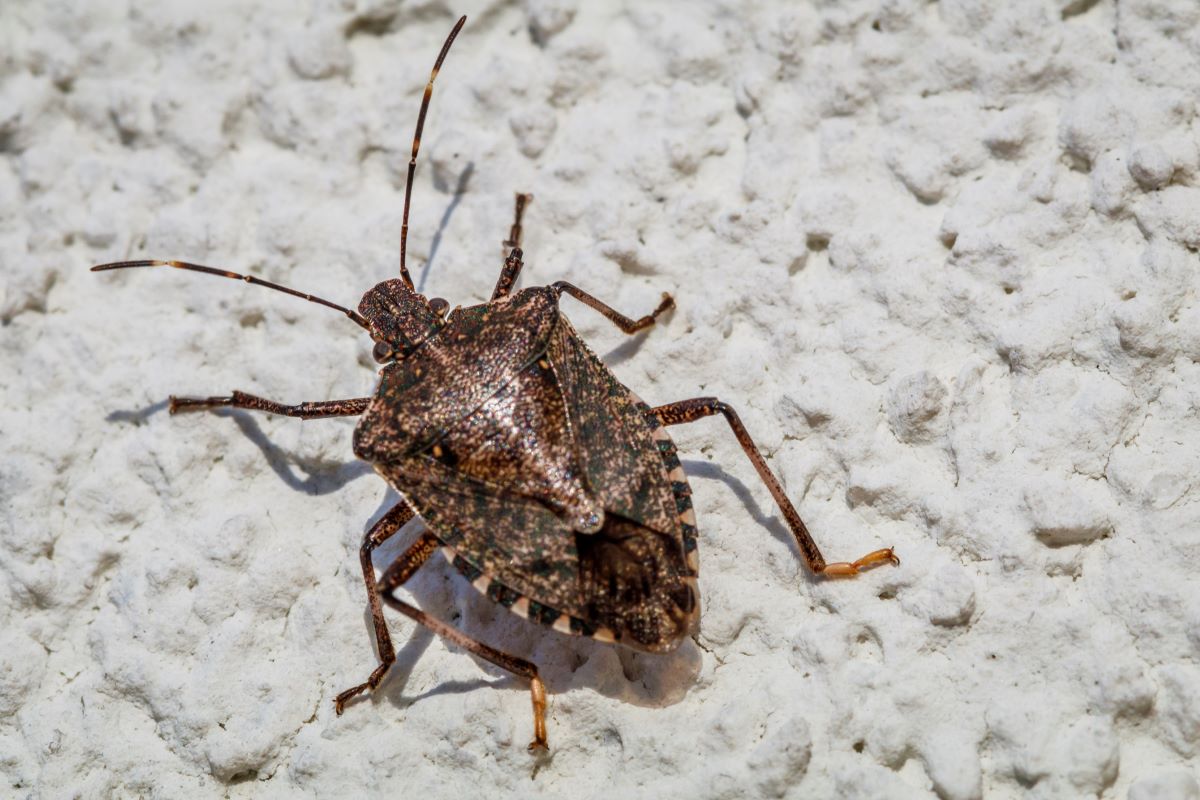
Stink bugs are shield-shaped insects that emit a nasty smell when threatened or crushed. Brown marmorated stink bugs are the most common type found in U.S. homes. While they don’t bite or cause structural damage, they often gather in large numbers, especially in fall as they look for warm spots to overwinter.
These bugs typically enter through gaps around windows, siding, or attic vents, and can become a seasonal nuisance. Though not harmful, their smell and tendency to reappear year after year make them frustrating to deal with.
How to get rid of stink bugs:
- Seal exterior gaps and cracks with caulk or weatherstripping.
- Use a vacuum to remove bugs and dispose of the bag immediately to avoid odor.
- Install screens on attic vents and chimneys.
- Keep lights dimmed at night to avoid attracting them.
- Avoid crushing stink bugs indoors, as it releases their odor.
When to Consider Professional Pest Control
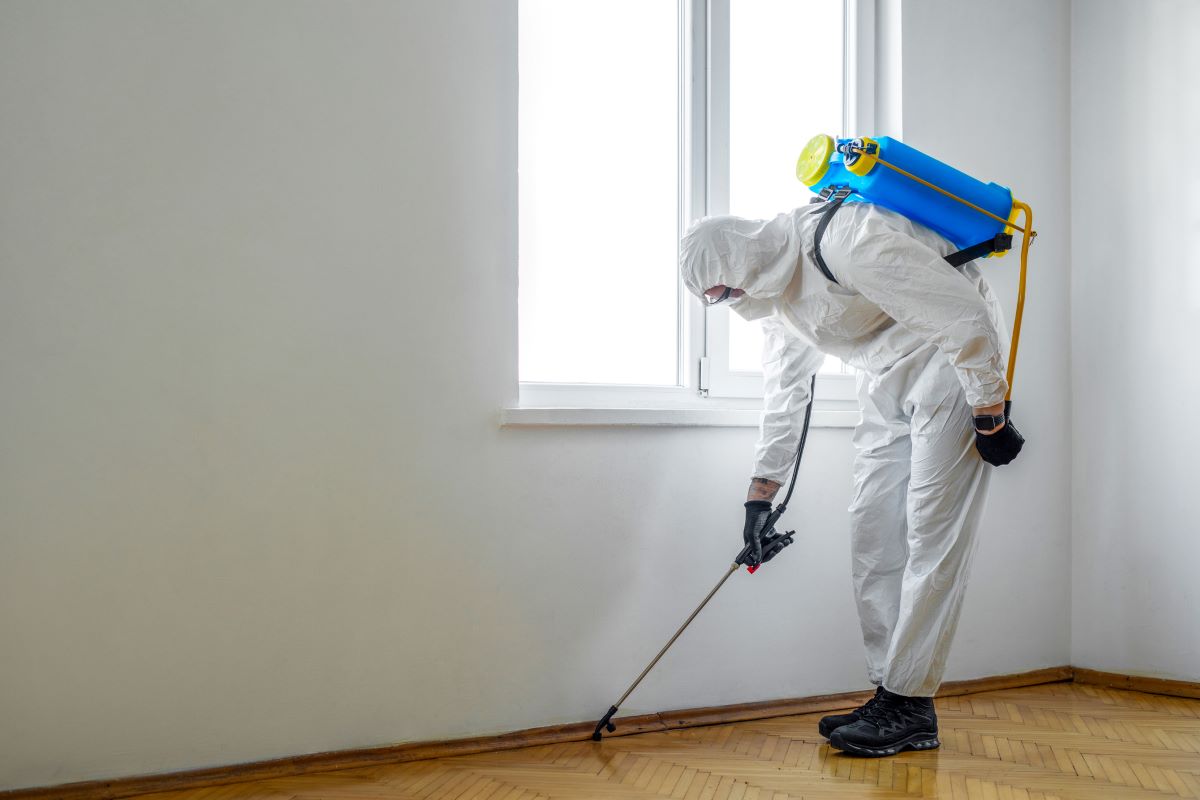
If you’re seeing bugs in the house, chances are they’ve found access to food, moisture, or shelter, and they’re not going anywhere on their own. Getting rid of bugs in the house using DIY methods like cleaning, traps, or over-the-counter sprays can be effective in some cases, but infestations that persist or spread might require the pros.
Pest control professionals are trained to identify the exact type of bug and recommend the most efficient treatment. For tricky or recurring problems, calling in an expert can often save time and prevent the issue from escalating.
